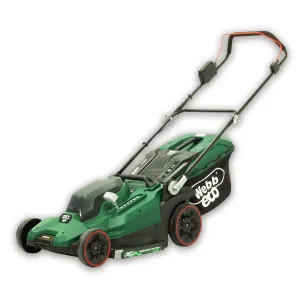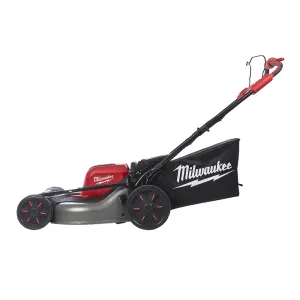Mower manufacturers will sensibly advise you to only mow grass when it is dry - especially if using an electric mower.
Safety should always be paramount, so if you have slopes in your lawn that may be slippery, or you have any concerns about your specific mower, it is always best to wait for grass to dry completely.
That said, it is not always possible to tell when grass is completely dry, and mowing some wet grass may be inevitable.
The problem with long grass
One of the most challenging grass states to mow is long grass. Long grass usually hides wet grass – that is to say that the lower half of the grass remains wetter for longer, because unless we’ve had a very long spell of hot dry weather, the sun and heat of the day can’t penetrate deep enough to completely dry it.
When we say long grass, we mean grass that is more than five inches high – perhaps grass that has been left for a few weeks during warm wet weather for example.
Brush your hand over it and it may feel dry to the touch but push a little deeper and the grass is still wet closer to the ground. Your choice now is to wait for the sun to try and dry it completely or get the mower out and see how it handles things.
Unless you have a top-of-the-range petrol mower with a large variety of settings, very sharp blades and an over-sized opening to the collection box, the chances are that the wetter grass will block the mower, prevent grass from flowing through to the collection box, and potentially damage your mower. So think carefully about whether it is safe or wise to proceed.
Mow slow and with caution
If you think the grass is sufficiently free of moisture to go ahead and cut, set your mower to its highest setting so you’re removing only the top of the grass with the first pass.
Make initial slow and short passes with the mower, pause and check to see if grass is flowing into the collection box well.
If the weather has been very wet and the ground is soft, you will need to check behind you to see if the mower wheels are making contact with earth and bringing mud through to the surface.
If this happens, you may be better to wait until the ground has dried out as mud can smother grass and ruin the look of your lawn.
Listen to the blades turning if you can, you may be able to pick up if they are struggling to move the grass through to the collection box.
If you notice a change in tone, or feel the mower is struggling, it is best to stop and wait for the grass to dry a little more.
Check the underside of the mower if you can do this safely – wet grass will stick more easily, and you may need to manually remove it. Make sure you have disconnected an electric mower from the power before doing this.
If you make a first pass on a high setting successfully, wait for the newly exposed grass to dry a little further before attempting another pass.
Most mowers will leave clumps of wet grass behind them on your lawn as the wet grass sticks together, forms a lump, then is too heavy to enter the grass collection box, so just drops back onto the lawn.
This can be a little frustrating but is usually easily rectified by running the mower over the lawn again to collect the errant grass once it has dried a little, or by manually raking it up.
In summary, it is always best to wait until there has been a period of dry weather before mowing grass as mowing wet grass has the potential to ruin the look of your lawn and damage your mower. If you do mow wet grass, proceed with caution, and always mow on a high setting.
Read more about getting the best from lawn mowing here, and how to get a perfectly striped law here.






